O ENXOFRE DE ASMODEU

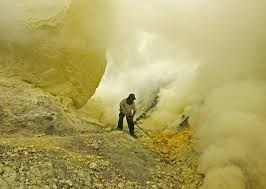
EARTHCACHE

PORTUGUÊS

As fumarolas constituem emanações de vapor de água e de gases que se formam através de aberturas na superfície da crosta da Terra e estão normalmente presentes em zonas com vulcanismo ativo, normalmente em períodos entre erupções vulcânicas. São comuns nos flancos dos vulcões, bem como em crateras e caldeiras. Todas as fumarolas exigem tanto calor e uma fonte de gás ou água. Podem ocorrer ao longo de pequenas fissuras, formando alinhamentos, ou em zonas de fratura, tais como caixas de falha, onde formam por vezes extensos campos de fumarolas em áreas onde uma fonte de calor superficial vulcânica é sobreposta por uma rocha permeável.
Nas zonas onde ocorrem rochas ígneas quentes, onde o nível freático aproxima-se da superfície ou em zonas de desgaseificação das formações, onde o magma subjacente está a libertar gases como dióxido de carbono, constituem-se áreas de concentração de nascentes (ou fontes) termais ou outras manifestações geotérmicas, como géiseres, "mudpots", terraços de sílica, etc. Só se o vapor atinge a superfície é que ocorre a fumarola. Podem ocorrer situações em que dá-se a emissão de água quente durante a estação chuvosa e de fumarolas na seca, quando há menos água subterrânea para condensar o vapor. As fontes termais são mais comuns que os outros tipos de manifestação geotérmica.
Quanto às emissões, a maior fonte de vapor de água é a água subterrânea aquecida por magma relativamente próximo à superfície. Além do vapor de água e do dióxido de carbono (CO2), emitem gases como dióxido de enxofre (SO2), ácido hidroclórico (HCl) e sulfureto de hidrogénio (HS), provenientes diretamente do magma. Uma fumarola rica em gases sulfurosos diz-se “sulfatara”. Alguns geólogos utilizam os termos “fumarola” e “solfatara” indiscriminadamente, independentemente do seu teor de enxofre, utilizando o termo “mofeta” os casos em que a libertação de gases é rica em CO2.
A saída dos gases, pode ser agressiva e dá-se a temperaturas variáveis, podendo atingir facilmente os 95º C à superfície e 130º C a apenas meio metro de profundidade. Esses gases são constituídos quase na totalidade por CO2 (95%), seguindo-se H2S (gás sulfídrico 3%), hidrogénio (H2) azoto (N2) e metano (CH4), em percentagens muito baixas. Em consequência das desgaseificações sobreaquecidas e quimicamente agressivas, as rochas circundantes alteram-se para materiais argilosos, associados a minerais secundários, tais como o enxofre em massas e em cristais (cor amarela), óxidos de ferro (avermelhados) e ainda os óxidos de alumínio (esbranquiçados), alguns destes materiais com propriedades terapêuticas.
Vulcanismo
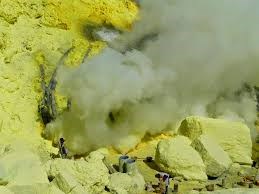
O vulcanismo é o conjunto dos processos através dos quais se dá o derrame de lava, gases e outros materiais (piroclastos) à superfície, provenientes do interior da Terra. Pode ser classificado em vulcanismo primário e vulcanismo secundário, sendo o primeiro referente ao evento vulcânico principal, associado aos vulcões, e o segundo às restantes manifestações vulcânicas, tais como, geiseres, fumarolas, nascentes termais, etc..
O leque de materiais expelidos pelos vulcões simultaneamente com a lava, abrange os gases (vapor de água, dióxido e monóxido de carbono, dióxido de enxofre e ácido clorídrico), e também materiais sólidos que consistem essencialmente em bombas, blocos, cinzas, poeiras, pedra-pomes e lapili ou bagacina (este último corresponde a fragmentos de lava cujas dimensões rondam os 4mm a 32mm).
O vulcanismo secundário:
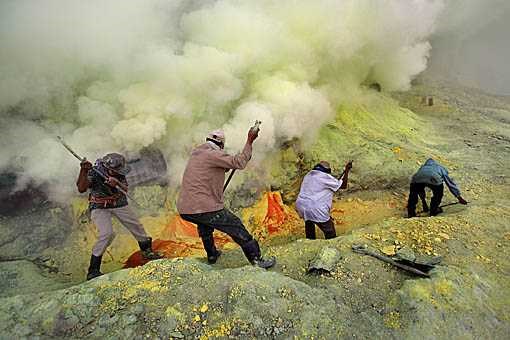
O vulcanismo secundário corresponde a manifestações de vulcanismo que não consistem em erupções vulcânicas, concretamente, mas estão relacionadas com a energia térmica emitida por corpos magmáticos quentes que se encontram a pequena profundidade. Este tipo de vulcanismo nunca é tão violento nem destrutivo quanto pode ser o vulcanismo principal.
As manifestações secundárias de vulcanismo, consistem em:
- nascentes termais
- fumarolas, mofetas e sulfataras
- géisers
Na atividade do tipo Sulfatara os materiais emitidos, a uma temperatura entre os 100º e os 300º, são compostos enriquecidos em enxofre (gasosos).
VULCANISMO E ENXOFRE
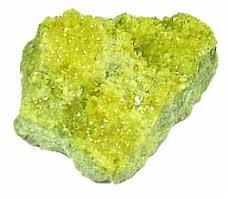
Tipo de atividade vulcânica não eruptiva que se manifesta pela emissão de gases, por nascentes termais e por geiseres. As emissões de gases denominam-se fumarolas, que podem, por sua vez, dividir-se em sulfataras, quando predominam os compostos de enxofre, e mofetas, quando predomina o dióxido de carbono. O vulcanismo atenuado também é conhecido por vulcanismo secundário ou residual.
Nos Açores existem muitos e variados locais onde aparece o enxofre ligado ao Vulcanismo, como por exemplo, na ilha de São Miguel: as Caldeiras das Furnas, as Caldeiras da Lagoa das Furnas, as Caldeiras da Ribeira Grande e a Caldeira Velha da Ribeira Grande; na Ilha Terceira: as Furnas do Enxofre na freguesia do Porto Judeu; etc…
O enxofre (enxofre de condensação) aparece em campos fumarólicos, ou seja, numa área que compreende diversas saídas de gases vulcânicos agressivos, a diversas temperaturas, algumas bastante elevadas (cerca de 95º C à superfície e cerca de 130º C a meio metro de profundidade). Tais desgaseificações são constituídas essencialmente por dióxido de carbono (c. 95%), gás sulfídrico (c. 3%), gás sulfuroso, hidrogénio, azoto, metano e outros, em proporções muito baixas. O enxofre vem “misturado” com vapores de água, mais outros gazes, mas como se encontra nesta faze, “mais frio”, condensa. O calor das “Fumarolas” cozeu as rochas e estas sob a ação do calor, alteraram-se, aparecendo “lamas ferventes”, que têm utilidade terapêutica.
Em consequência das desgaseificações sobreaquecidas e quimicamente agressivas, as rochas circundantes alteraram-se (e alteram-se) em materiais argilosos, associados a minerais secundários, tais como o enxofre em massas e em cristais (de cor amarela), óxidos de ferro (de cor avermelhada), óxidos de alumínio (de cor esbranquiçada).
Um campo fumarólico, petrologicamente, é constituído por rochas traquíticas (com mais sílica do que basalto). Distribuído entre os 583 e os 620 metros de altitude, apresenta um clima húmido, com valores anuais de precipitação superiores a 2000mm. Dadas essas características, e à presença de solos pouco permeáveis, a zona tem tendência ao encharcamento.
As mesmas características, nomeadamente a temperatura e a concentração de gases vulcânicos, condicionam a distribuição da vegetação, que apresenta uma zonação relativamente aos focos das fumarolas. Junto a estas, o solo é demasiadamente quente para permitir a cobertura vegetal. Nas suas vizinhanças surgem comunidades de musgos associadas às maiores concentrações de gases, cobertas de algas. Segue-se uma zona dominada por várias espécies de esfagno ou musgão ("Sphagnum ssp.") e ou "Nardia sclalaris", especialmente nas superfícies com maior declive. Toda a área é extremamente diversificada em comunidades de musgos e hepáticas, com cerca de 50 espécies registadas, algumas raras e registadas na "Lista Vermelha dos Briófitos da Europa", do Comité Europeu para a Conservação dos Briófitos. A maiores distâncias, das fumarolas desenvolve-se, uma zona de "Caluna vulgaris" (rapa) com exemplares de "Vaccinium cylindraceum" (uva-da-serra) e uma zona de herbáceas (pastagem). Nas áreas livres da influência de gases vulcânicos a vegetação é caracterizada por espécies típicas de turfeiras nas áreas mais baixas, deprimidas e com acumulação de água, ou da Floresta Laurissilva dos Açores, nas zonas mais altas e expostas.
O elevado interesse geológico e biológico e a beleza paisagística intrínseca das Furnas e outros locais similares, do ponto de vista geológico e ambiental, justificaram a sua classificação como monumento natural regional, pelo Decreto Legislativo Regional n.º 10/2004/A, que reza:
"... as furnas do Enxofre, situadas na zona central da ilha Terceira, correspondem a um fenómeno de vulcanismo secundário designado por fumarolas, consistindo na libertação de gases para a superfície através de um sistema de fissuras, em torno das quais se formam alguns depósitos de enxofre; considerando que este local é também considerado como parte integrante de um habitat natural situado numa área de relevância europeia ao nível da conservação da natureza,constando da lista dos sítios de importância comunitária para a região biogeográfica macaronésia da Rede Natura 2000”.
O ENXOFRE
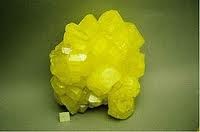
O enxofre (do latim sulphur) é um elemento químico de símbolo S, número atômico 16 e de massa atómica 32 u. À temperatura ambiente, o enxofre encontra-se no estado sólido.
É um não-metal insípido e inodoro, (O famoso "Cheiro de enxofre" vem de seus compostos voláteis, por exemplo o Sulfeto de hidrogênio, facilmente reconhecido na forma de cristais amarelos que ocorrem em diversos minerais de sulfito e sulfato, ou mesmo em sua forma pura (especialmente em regiões vulcânicas). O enxofre é um elemento químico essencial para todos os organismos vivos, sendo constituinte importante de muitos aminoácidos. É utilizado em fertilizantes, além de ser constituinte da pólvora, de medicamentos laxantes, de palitos de fósforos e de inseticidas.
Este não-metal tem uma coloração amarela, mole, frágil, leve, desprende um odor característico de ovo podre ao misturar-se com o hidrogênio, e arde com chama azulada formando dióxido de enxofre. É insolúvel em água, parcialmente solúvel em álcool etílico, porém se dissolve em dissulfeto de carbono e em tolueno aquecido (cerca de 20g/100mL a 95 °C e menos de 2g/100mL a 20 °C). É multivalente e apresenta como estados de oxidação mais comuns os valores -2, +2, +4 e +6.
Em todos os estados, sólido, líquido e gasoso apresenta formas alotrópicas cujas relações não são completamente conhecidas. As estruturas cristalinas mais comuns são o octaedro ortorrômbico (enxofre α) e o prisma monoclínico ( enxofre β ) sendo a temperatura de transição de 95,5 °C; em ambos os casos o enxofre se encontra formando moléculas na forma de anel. As diferentes disposições destas moléculas é que produzem as diferentes estruturas cristalinas. À temperatura ambiente, a transformação de enxofre monoclínico em ortorrômbico, mais estável, é muito, muito, lenta.
Ao fundir-se o enxofre, obtém-se um líquido que flui com facilidade formado por moléculas de S8, porém ao aquecê-lo se torna marrom (castanho) levemente avermelhado apresentando um aumento na sua viscosidade. Este comportamento se deve a rutura dos anéis formando longas cadeias de átomos de enxofre que se enredam entre si diminuindo a fluidez do líquido; o máximo de viscosidade é alcançado numa temperatura em torno de 200 °C. Esfriando-se rapidamente este líquido viscoso obtém-se uma massa elástica, de consistência similar a da goma, denominada enxofre plástico ( enxofre γ ) formada por cadeias que não tiveram tempo para reorganizarem em moléculas de S8; após certo tempo a massa perde a sua elasticidade cristalizando-se no sistema rômbico. Estudos realizados com raios X mostram que esta forma amorfa pode estar constituída por moléculas de S8 com uma estrutura de hélice em espiral.
No estado de vapor também forma moléculas de S8, porém a 780 °C já se alcança um equilíbrio com moléculas diatômicas, S2, é acima de aproximadamente 1800 °C a dissociação se completa encontrando-se átomos de enxofre.

ABUNDÂNCIA
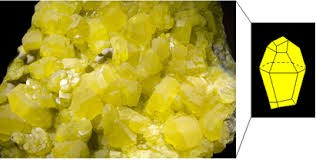
O enxofre é o 16º elemento em ordem de abundância, constituindo 0,034% em peso na crosta terrestre, é encontrado em grandes quantidades na forma de sulfetos (galena) e de sulfatos (gesso). Na forma nativa é encontrado junto a fontes termais, zonas vulcânicas e em minas de cinábrio, galena, esfalerita e estibina. É extraído pelo processo Frasch, processo responsável por 23% da produção, que consiste em injetar vapor de água superaquecido para fundir o enxofre, que posteriormente é bombeado para o exterior utilizando-se ar comprimido.
Também está presente, em pequenas quantidades, em combustíveis fósseis como carvão e petróleo, cuja combustão produz dióxido de enxofre que combinado a água resulta na chuva ácida, por isso, a legislação de alguns países exige a redução do conteúdo de enxofre nos combustíveis. Este enxofre, depois de refinado, constitui um percentual importante do total produzido mundialmente. Também é extraído do gás natural que contém sulfeto de hidrogênio que, uma vez separado, é queimado para a produção do enxofre:
2 H2S + O2 ![\longrightarrow]() 2 S + 2 H2O
2 S + 2 H2O
A coloração variada de Io, a lua vulcânica de Júpiter se deve a presença de diferentes formas de enxofre no estado líquido, sólido e gasoso. O enxofre também é encontrado em vários tipos de meteoritos e, acredita-se que a mancha escura que se observa próximo a cratera lunar Aristarco deva ser um depósito de enxofre.
Ciclo do Enxofre
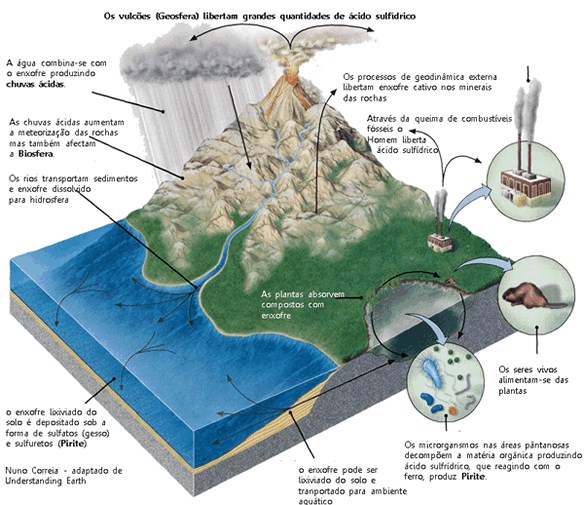
Enxofre é uma substância amarela encontrada no solo, que queima com facilidade. Ele entra na produção de ácido sulfúrico, uma substância muito utilizada para fertilizantes, corantes e explosivos (pólvora, palitos de fósforo, etc). O enxofre é encontrado nas rochas sedimentares, (formadas por depósitos que se acumularam pela ação da natureza) nas rochas vulcânicas, no carvão, no gás natural etc.
O enxofre é essencial para a vida, faz parte das moléculas de proteína, vitais para o nosso corpo. Cerca de 140g de enxofre estão presentes no ser humano. A natureza recicla enxofre sempre que um animal ou planta morre. Quando apodrecem, as substâncias chamadas de “sulfatos”, combinados com a água são absorvidos pelas raízes das plantas. Os animais o obtêm comendo vegetais ou comendo outros animais.
Quando o ciclo é alterado, animais e plantas sofrem, isso vem acontecendo através da constante queima de carvão, petróleo e gás. Esses combustíveis são chamados de “fósseis”, pois se formaram há milhões de anos, a partir da morte de imensas florestas tropicais ou da morte de microscópicas criaturas denominadas “plânctons”.

PARA REALIZAR E REGISTAR ESTA EARTHCACHE:
PERGUNTAS:
Para “encontrar/registar” esta cache deverá: provar que esteve no local e responder às seguintes questões, enviando um email/mensagem de Geocaching, com as respostas, em português ou em inglês, para o nosso perfil.
Só depois, de enviar as respostas, e conforme as “guidelines” para as Earthcaches, deverá efetuar o seu registo!
Serão removidos todos os registos que não obedeçam a estes requisitos.
1. Estudando o tema geológico proposto nesta earthcache, responde às seguintes questões:
a) Explica como “aparece” o enxofre em campos fumarólicos?
b) Como se chama uma fumarola rica em gases sulfurososos?
2. Indica, pelo menos, quatro locais situados nos Açores, que não no vale das Furnas, onde aparece o enxofre ligado ao Vulcanismo.
3. Observando a zona do GZ, responde às seguintes questões:
a) São visíveis cristais de enxofre? Se sim, onde se localizam e qual a sua cor?
b) Na eventualidade de serem observáveis cristais de enxofre, na zona do GZ, estima o seu tamanho.
c) Na zona do GZ, existe um bloco de pedra, com a forma aproximada de um paralelepípedo, com várias marcas amarelada e alaranjadas! Estima o seu volume (em cm3).
4.
TAREFA OBRIGATÓRIA:Deverá tirar uma foto sua, onde você apareça (ou com um papel/placa onde conste o seu nickname e a data da visita) e que comprove a sua presença no GZ desta EC - NÃO METASPOILERS. Esta foto deverá ser colocada no seu registo ou enviada por email ou sistema de mensagens de Geocaching, para o owner!

Não responderemos ao seu contato, a não ser que haja algum “problema” com as suas respostas ou registo.
AGRADECIMENTOS:
Agradecemos a especial colaboração do
Professor Doutor Victor-Hugo Forjaz - Vulcanólogo de Engenharia, Jubilado
e do Observatório Vulcanológico e Geotérmico dos Açores (OGVA)


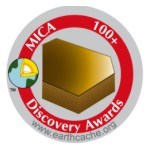
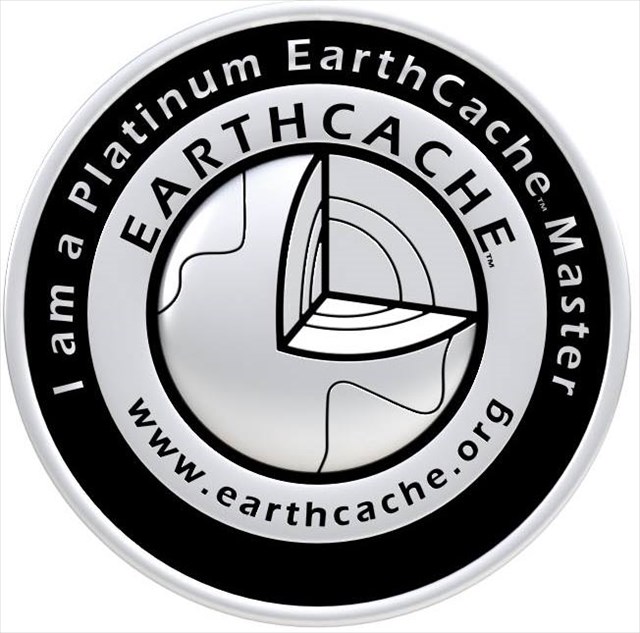

THE SULPHUR ASMODEUS
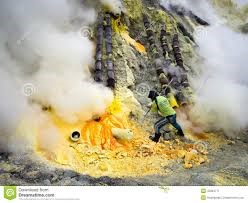
ENGLISH

EARTHCACHE
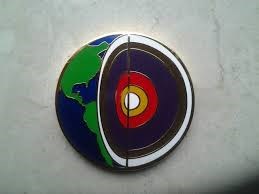
The steam vents are water vapor fumes and gases that are formed through openings in the surface crust of the earth and are often present in areas with volcanic activity, usually during periods of volcanic eruptions. They are common in the flanks of volcanoes and craters and boilers. All fumarolas require both heat and a source of gas or water. May occur over small cracks forming alignments, or fracture zones, such as failure boxes, which often form large fumarole fields in areas where a heat source volcanic surface is overlaid with a permeable rock.
In areas where there are hot igneous rocks where the water level approaches the surface or in the degassing zones of the formation where the underlying magma is to release gases such as carbon dioxide, constitute areas of concentration of springs (or sources) thermal or other geothermal manifestations such as geysers, "mudpots", silica terraces, etc. Only if the vapor reaches the surface of the geyser it is occurring. There may be situations in which gives the emission of hot water during the rainy season and the dry fumaroles, when there is less groundwater to condense the steam. The hot springs are more common than the other types of geothermal manifestation.
Regarding the emissions, higher water vapor source is heated by ground water relatively close to the surface magma. Besides water vapor and carbon dioxide (CO2), emit gases such as sulfur dioxide (SO2), hydrochloric acid (HCl) and hydrogen sulfide (HS), directly from the melt. A rich fumarole in sulfurous gases said to be "sulfatara". Some geologists utilize the terms "fumarole" and "solfatara" indiscriminately regardless of their sulfur content, utilizing the term "mofeta" cases where the release of gases is rich in CO2.
The output of gases, can be aggressive and occurs at varying temperatures can easily reach 95 C to 130 C surface and just half a meter deep. These gases consist almost entirely of CO2 (95%), followed by H2 S (hydrogen sulfide gas 3%), hydrogen (H2) nitrogen (N2) and methane (CH4) in very low percentages. As a result of overheated and chemically aggressive desgaseificações, the surrounding rocks change to clay materials associated with secondary minerals such as sulfur and mass crystals (yellow) iron oxide (reddish) and also aluminum oxides (whitish), some of these materials have therapeutic properties.
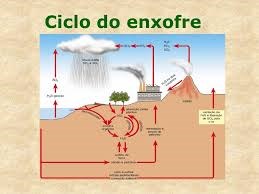
Volcanism
Volcanism is the set of processes through which gives the lava flow, gases and other materials (tephra) to the surface from the Earth's interior. It can be classified into primary and secondary volcanism volcanism, the first relating to the main volcanic event, associated with volcanoes, and the second to the other volcanic events, such as geysers, fumaroles, thermal springs, etc ..
The range of materials ejected from volcanoes simultaneously with the washing, comprises the gases (water vapor, carbon dioxide, carbon monoxide, sulfur dioxide and hydrochloric acid) and also solid materials consisting essentially of pumps, blocks, ash, dust, pumice and lapili or bagacina (the latter corresponds to lava fragments whose dimensions are around 4mm to 32mm).
The secondary volcanism:
The secondary manifestations of volcanic corresponds to not consist of volcanic eruptions, concretely, but are related to the thermal energy emitted by hot magmatic bodies that are small depth. This type of volcanism is never as violent or destructive as may be the main volcanism.
Secondary manifestations of volcanism, consist of:
- Thermal springs
- Fumaroles, mofetas and sulfataras
- geysers
In the activity of Sulfatara type materials issued at a temperature between 100 and 300, are enriched in sulfur compounds (gaseous).
VOLCANISM AND SULPHUR
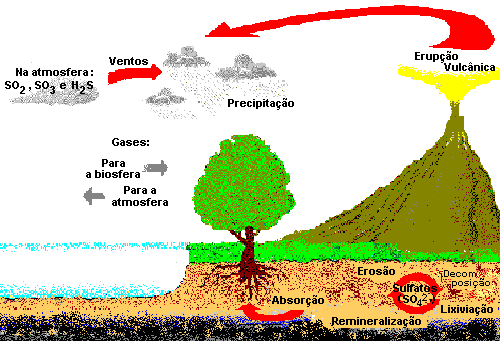
Volcanic activity type eruptive not manifested by the emission of gases, by thermal springs and geysers. The emissions are called steam vents which may, in turn, divided into sulfataras when the predominant sulfur compounds and mofetas where carbon dioxide predominates. The attenuated volcanism are also known as secondary or residual volcanism.
In the Azores there are many and varied locations where it appears the sulfur linked to volcanism, for example, on the island of Sao Miguel das Furnas the boilers, the boilers of Lagoa das Furnas, the Boilers of Ribeira Grande and “Caldeira Velha” of Ribeira Grande; in Terceira Island: the “Sulphur Cave” in the parish of the “Porto Judeu”; etc ...
The sulfur (sulfur condensation) appears in fumarolic fields, i.e., an area comprising several aggressive volcanic gas outlets, at different temperatures, some quite high (around 95 C at the surface to about 130 ° C to half a meter deep ). Such desgaseificações consists essentially of carbon dioxide (c. 95%), hydrogen sulfide (c. 3%), sulfur dioxide, hydrogen, nitrogen, methane and others in very low proportions. Sulfur is "mixed" with water vapor, plus other gases, but how is this do, "colder", condenses. The warmth of "fumaroles" baked rocks and these under the action of heat, have changed, appearing "fervent sludge", which have therapeutic utility.
As a result of overheated and chemically aggressive desgaseificações, the surrounding rocks have changed (up and alter) in clayey materials associated with secondary minerals such as sulfur and mass crystals (yellow), ferric oxides (for reddish color), aluminum oxides (whitish).
A fumarólico field petrologicamente, comprises traquíticas rocks (more silica than basalt). Distributed between 583 and 620 meters above sea level, it has a humid climate, with annual precipitation values greater than 2000mm. Given these characteristics, and the presence of poorly permeable soil, the area is prone to flooding.
The same characteristics, including temperature and the concentration of volcanic gases, affect the distribution of vegetation, which features a zonation in relation to outbreaks of fumaroles. Next to these, the soil is too hot to allow vegetation. In their neighborhoods arise mosses communities associated with higher gas concentrations, covered in algae. The following is a zone dominated by various species of sphagnum or musgão ("Sphagnum spp.") And or "Nardia sclalaris", especially in areas with a greater slope. The whole area is extremely diverse in mosses and liverworts communities, with about 50 species recorded, some rare and registered in the "Red List of Bryophytes of Europe", the European Committee for the Conservation of Bryophytes. The greater distances, fumaroles develops, a zone of "Caluna vulgaris" (rapa) with copies of "Vaccinium cylindraceum" (grape-of-saw) and a herbaceous zone (pasture). In areas free of the influence of volcanic gases vegetation is characterized by typical species of peat bogs in the lower areas, depressed and water accumulation, or Azorean Laurel Forest, in the higher and exposed areas.
The high geological and biological interest and intrinsic scenic beauty of Furnas and other similar sites, geological and environmental point of view, justified their classification as regional natural monument, the Regional Legislative Decree No. 10/2004 / A, which reads :
"... The Sulfur caves, located in the central zone of the third island correspond to a phenomenon called secondary volcanic steam vents consisting in the emission of gases to the surface through a system of cracks, around which some form sulfur deposits, whereas this place is also considered part of a natural habitat located in an area of European importance in terms of nature conservation, consisting of the list of sites of Community importance for the Macaronesian biogeographical region of the Natura 2000 network ".
SULPHUR
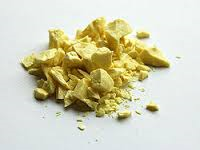
The sulfur (sulfur from Latin) is a chemical element with symbol S, atomic number 16 and atomic mass 32 u. At room temperature, the sulfur is solid.
It is a tasteless and odorless non-metal, (The famous "sulfur smell" comes from its volatile compounds, for example hydrogen sulfide, easily recognized as yellow crystals that occur in many minerals sulfite and sulfate, or even pure form (especially in volcanic areas). Sulfur is an essential chemical element for all living organisms, it is important constituent of many amino acids. It is used in fertilizers, in addition to being a constituent of the powder of laxatives, matches sticks and insecticides.
This non-metal has a yellow color, soft, fragile, light, gives off a characteristic odor of rotten eggs when mixed with hydrogen, and burns with blue flame forming sulfur dioxide. It is insoluble in water, partially soluble in ethanol but dissolved in carbon disulfide and warm toluene (about 20 g / 100 ml at 95 ° C and less than 2 g / 100 ml at 20 ° C). It is multivalent and presents as the most common oxidation states the values -2, +2, +4 and +6.
In all states, solid, liquid and gas has allotropes whose relations are not completely known. The most common structures are the orthorhombic crystalline octahedron (α sulfur) and monoclinic prism (β sulfur) being the transition temperature of 95.5 ° C; in both cases sulfur is forming molecules in a ring. The various provisions of these molecules is that they produce the different crystal structures. At room temperature, the transformation of monoclinic sulfur orthorhombic, more stable, is very, very slow.
When the sulfur to melt, yields a liquid which flows easily formed by S8 molecules, but the heat it turns brown (brown) slightly reddish with an increase in its viscosity. This behavior is due to rupture of the rings forming long chains of sulfur atoms which are entangled together reducing the flowability of the liquid; maximum viscosity is achieved at a temperature around 200 ° C. Cooling quickly to this viscous liquid is obtained by an elastic mass of the gum-like consistency, known as plastic sulfur (sulfur γ) formed by chains that did not have time to reorganize into the S8 molecules; after a certain time the dough loses its elasticity crystallizing the rhombic system. Studies using X-rays show that this amorphous form may be comprised of S8 molecules with a helical spiral structure.
In the vapor state also forms S8 molecules, however at 780 ° C already achieves a balance with diatomic molecules, S2, is above about 1800 ° C to complete dissociation lying sulfur atoms.
ABUNDANCE
![]()
Sulfur is the 16th element in order of abundance, being 0.034% by weight in the earth's crust, it is found in large quantities in the form of sulphides (galena) and sulphates (gypsum). In native form is found near hot springs, volcanic areas and cinnabar mines, galena, sphalerite and stibnite. It is extracted by Frasch process, process responsible for 23% of production, which consists in injecting superheated steam to melt the sulfur which is then pumped out using compressed air.
It is also present in small amounts in fossil fuels like coal and oil, whose combustion produces sulfur dioxide which combined with water results in acid rain, so the legislation in some countries requires a reduction in the sulfur content in fuels. This sulfur, then refined, an important percentage of total production worldwide. It is also extracted from natural gas containing hydrogen sulfide which, once separated, is combusted to produce sulfur:
2 H2S + O2 ![\longrightarrow]() 2 S + 2 H2O
2 S + 2 H2O
The variegated colored Io, volcanic moon Jupiter is due to the presence of various forms of sulfur in liquid, solid and gas. The sulfur is also found in several types of meteorites, and it is believed that the dark spot is observed near moon crater Aristarch should be a sulfur deposit.
Sulfur Cycle
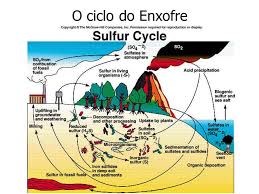
Sulfur is a yellow substance found in soil, which burns easily. It enters the production of sulfuric acid, a widely used substance for fertilizers, explosives and dyes (powder, match sticks, etc.). Sulfur is found in sedimentary rocks, (made up of deposits that have accumulated by the action of nature) in the volcanic rocks, coal, natural gas etc.
Sulfur is essential for life, is part of the protein molecules, vital for our body. About 140g of sulfur are present in humans. Nature recycles sulfur whenever an animal or plant dies. When rot, the substances called "sulphate" combined with the water are absorbed by the roots of plants. Animals get it by eating vegetables or eating other animals.
When the cycle changes, animals and plants suffer, this has been going through constant burning of coal, oil and gas. These fuels are called "fossil" because it was formed millions of years ago, from the death of vast tropical forests or the death of microscopic creatures called "plankton".
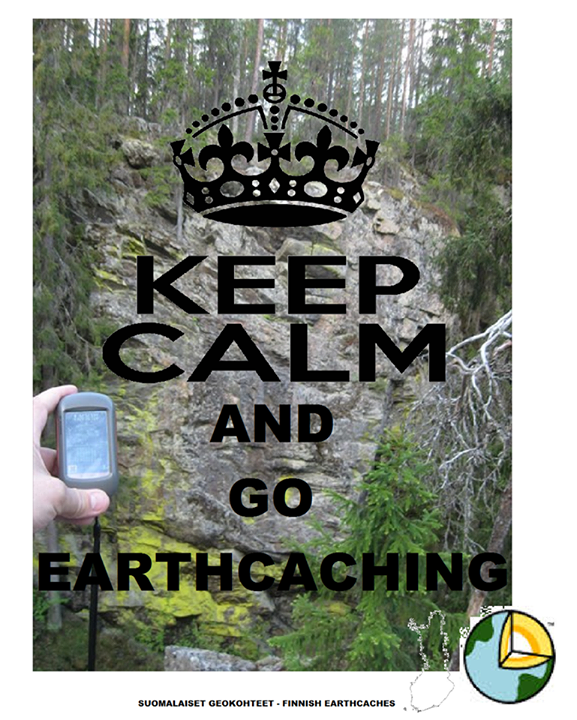

TO PERFORM AND LOG THIS EarthCache:
QUESTIONS:
To "find / register" this cache must: prove that visited the site and answer the following questions by sending an email / message Geocaching, with answers (in Portuguese or in English, only) to our profile.
Only later, sending the answers, and as the "guidelines" for EarthCaches should make your registration! They will be removed from all records that do not meet these requirements.
1. Studying the geological theme proposed this EarthCache, answer the
following questions:
a) Explains how to "shows" sulfur in fumarolic fields?
a) What do you call a rich fumarole in sulfurososos gases?
2. Indicates at least four sites located in the Azores, not in the valley of Furnas, where it appears the sulfur linked to volcanism.
3. Observing the area of GZ, answer the following questions:
a) are visible sulfur crystals? If so, where they are located and what is
its color?
b) In the case of sulfur crystals are observed in the TG area, estimates
its size.
c) the area of the GZ is a stone block, with the approximate form of a
parallelepiped with various yellow and orange marks! Estimates its volume (in cm3).
4.
TASK (not optional): You must take a picture of yourself, where do you show up, (or with a paper / plaque with your geocaching nickname and the date of the visit) and that proves your presence in the GZ of this EC - no spoilers please. This photo must be placed in your log or sent by email or Geocaching messaging system, to the owner!
We do not respond to your touch, unless there is a "problem" with their answers or register.

THANKS
We appreciate the special collaboration of
Professor Victor-Hugo Forjaz - Volcanologist Engineering, Emeritus
and Volcanological and Geotermic Observatory of Azores (OGVA)




